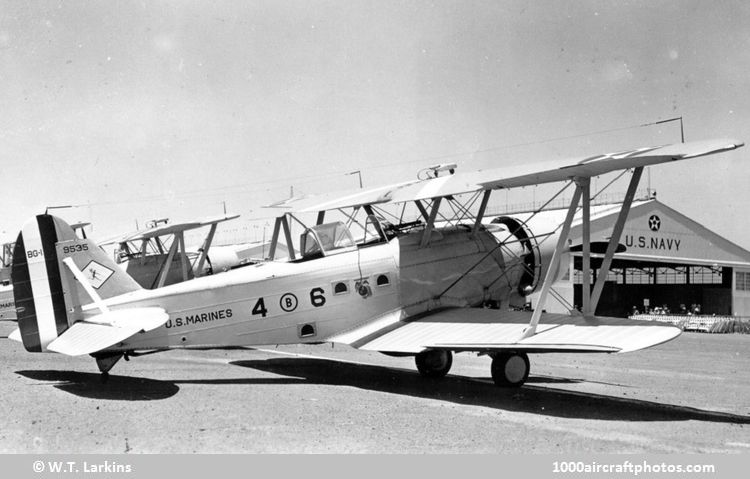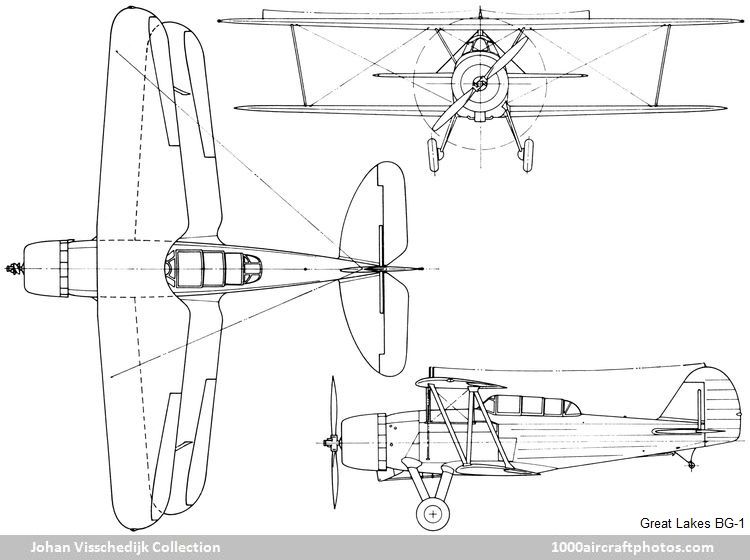Experience with the TG-2 was used by Great Lakes to design a new dive-bomber for the Navy, under a contract issued on June 13, 1932. The aircraft, tested in competition with the Consolidated XB2Y-1, was required to carry a 1,000 lb (454 kg) bomb under the fuselage and to seat two, a pilot and an observer/gunner. Powered by a Pratt & Whitney R-1535-64 Wasp radial engine, the XBG-1 (BuNo. 9220) was completed in mid-1933 and was tested by the Navy in its original open-cockpit form. The armament comprised two 0.30 in (7.62 mm) machine guns, one fixed forward and one flexible aft.
Proved superior to the XB2Y-1 in tests, the Great Lakes biplane was ordered into production in November 1933, and two subsequent contracts brought the total quantity to sixty, BuNos. 9494 to 9520; 9534 to 9550; 9840 to 9855. Production models, which began to reach operational units in October 1934, had a 750 hp R-1535-82 engine and an enclosed canopy over the two cockpits but were in other respects similar to the prototype.
First unit equipped was VB-3B aboard the USS Ranger (later, Lexington); in July 1937, this unit became VB-4 and transferred back to the Ranger, taking its nineteen BG-1s with it. They were relinquished in 1938, having served operationally with only this one Navy unit, but remained in use for utility duties at shore bases for a few more years.
At least half of BG-1 production was assigned to the USMC, equipping VB-4M in 1935 and VB-6M in 1936; these units were redesignated VMB-2 and VMB-1 respectively in July 1937 and retained their BG-1s until 1940, when VMS-1 at Quantico also flew the type for a short period."

